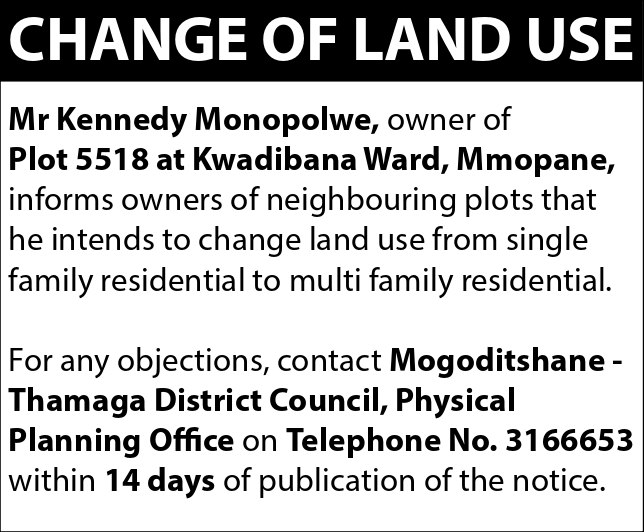- Fixed telephony services to further decline
- Mobile subscriptions to also decline further
KEABETSWE NEWEL
The number of active mobile subscriptions decreased from 3,226,389 in March 2017 to 3,181,591 in March 2018 representing a decline of about 1.4 percent compared to the 6.8 percent decline recorded between 2016 and 2017, Botswana Communications Regulatory Authority (BOCRA) has revealed.
In its 2018 annual report, BOCRA Chief Executive Officer (CEO) Martin Mokgware said mobile teledensity declined from 159 percent in March 2017 to 157 percent as at March 2018.
“The decrease in active mobile subscriptions in the review period was attributed mainly to a high churn rate experienced during the festive season of 2017 by the three operators which had not been fully recovered until March 2018,” he revealed.
In terms of market share Mascom Wireless continues to be the leader at 53 percent followed by Orange Botswana at 31 percent while BTCL trails at 16 percent. In the previous year, Mascom had market share of 55 percent followed by Orange with 30 percent and lastly BTC Mobile with 15 percent.
According to the BOCRA annual report, the number of mobile subscriptions grew by 85 percent from 1,874,101 in March 2009 to 3,460,331 in March 2016. Uptake of subscriptions then declined by 7 percent in March 2017 and further declined in March 2018.
BOCRA said the three Public Telecommunications Operators (PTOs), Mascom, Orange and BTC, explain the decline as natural churn as market reaches maturity.
“It is expected that uptake of subscriptions would lessen in future, unless there is a strategic intervention by the industry aimed at increasing demand for new subscriptions. Such interventions may involve introduction of totally new and innovative products that address an unserved market need,” BOCRA revealed in the report.
The market share between prepaid and post-paid mobile telephony subscriptions has remained the same for the past ten years at 98 percent and 2 percent respectively. BOCRA said the status quo is due to consumer preferences of prepaid services over post-paid services. Though post-paid is cheaper, prepaid allows for budget spending through prepayment and paying for consumption whereas postpaid has recurring charges that are not related to consumption.
Fixed telephony subscriptions grew from 144,195 in March 2009 to 174,992 in March 2014. Subscriptions declined beginning March 2015, reaching an all-time low of 140,873 in March 2017, then increasing marginally by about 0.7 percent between March 2017 and March 2018. Teledensity for fixed telephony is 7 percent.
“The expected long-term market trend is that there may be further decline in demand of fixed telephony services as consumers prefer the use of mobile telephony. The superiority of mobile telephony over fixed telephony is in its convenience of mobility, capability to text, download music, as well as e-commerce on-the-go. The offerings by mobile telephony service providers are popular among the youth who constitute the largest proportion of the population of Botswana.”
FIXED BROADBAND INTERNET
BOCRA says the market trends show a growth in access and increased usage of fixed broadband, as this service presents high speeds and high internet capacities. In the fixed broadband category, BTCL offers Asymmetric Digital Subscriber Line (ADSL) while Orange Botswana offers fixed wireless broadband named Konnecta.
ADSL subscriptions decreased by 33 percent between March 2017 and March 2018 from 59,590 subscriptions to 40,164 subscriptions. This decline was attributable to the data validation and clean up exercise where accounting for active subscriptions was improved. The number of subscriptions for Orange Botswana fixed wireless Internet increased by 15 percent from 8,997 to 10,350 and it is anticipated to continue to increase steadily.




